What are eggplants and how to grow them?

Eggplant is one of the versatile plants found in most areas. It is quite difficult to care for this culture, but the result is worth it. After all, "blue" can be used to prepare a large number of delicious dishes.
Is it a berry or a vegetable?
Large eggplant fruits are elongated. They have a glossy dark rind and light flesh. Most gardeners call eggplants vegetables. This is due to the fact that they are grown in the beds.
Nevertheless, according to botanical classification, eggplant is a berry... The fact is that the plant belongs to the genus Solanaceae. All members of this group are berries. Wherein the plant is commonly called a vegetable.

Origin
Under natural conditions, eggplants grow in eastern countries. The history of the conquest of the world by eggplants began from the moment when the Arabs brought these fruits to southern Europe. The locals did not like the taste of the unusual fruits. It was too bitter and unpleasant. Previously, people even called these fruits "apples of rabies", believing that eating them leads to madness.
For a long time, they were used only for medicinal purposes. They began to grow eggplants for the preparation of various dishes only at the end of the 15th century. After another 2 centuries, "blue" appeared in Russia. Like many other fruits and vegetables, the locals did not immediately like eggplants.
But now this culture is happily grown in most regions.
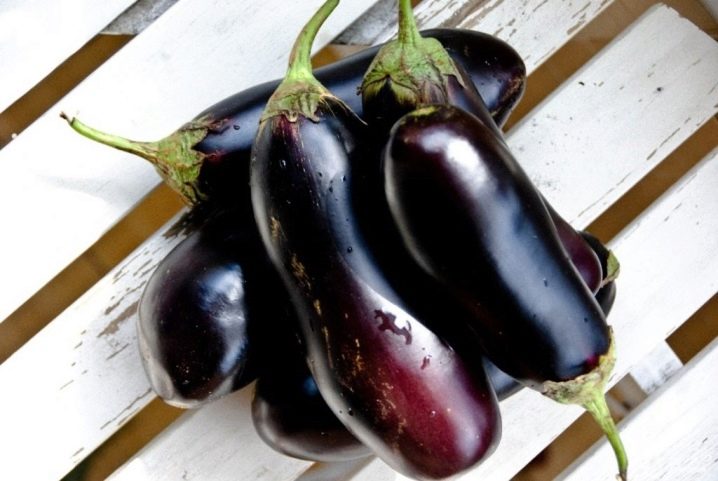
Botanical description
As already mentioned, eggplants belong to the nightshade family. They grow best in warm, humid regions.
The bushes grow on average up to 0.5-1.5 m in height. Eggplant foliage is dark green, with a rough surface. The inflorescences consist of several large flowers. You can see them from July to early September. The flowering time depends on the varietal characteristics.
Eggplant fruits can be not only dark blue or purple. There are milky white, light purple or even golden. The size of the fruit also depends on the characteristics of the variety. Ripe eggplants weigh about 400-700 grams on average.
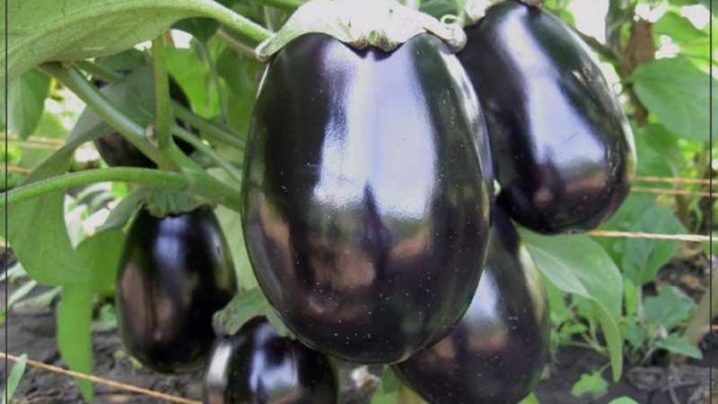
The best varieties
You can plant different varieties of eggplants on your site. The most popular are the following plant varieties.
-
"Valentina". This variety is early maturing. Ripe fruits are dark, almost black. Their shape is slightly elongated. Eggplant not only looks good, but also tastes great.
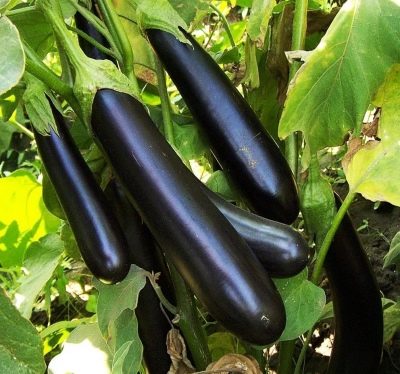
- "Czech early". This is another early variety. Plants are compact, but this characteristic does not affect their productivity in any way. Dark purple fruits appear on them very quickly. Their flesh is white, completely without bitterness.
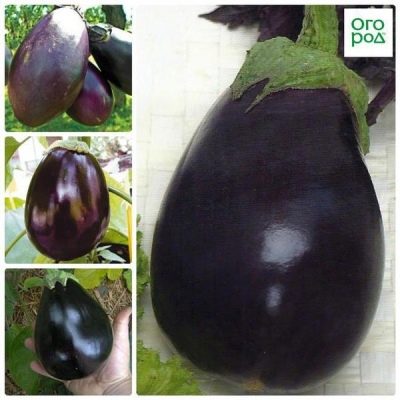
- "Delicacy". This type of eggplant is also highly regarded for its delicious taste. The fruits ripen quite early. Their color is dark purple.
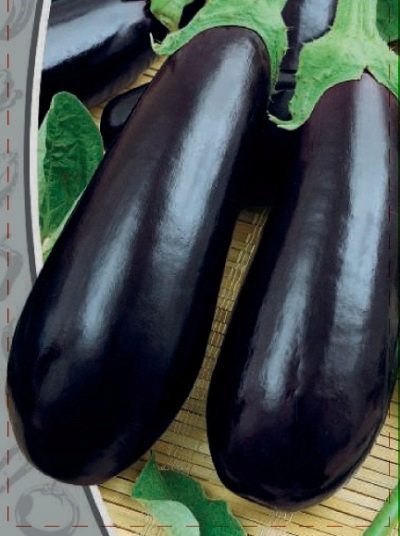
- "Albatross". This eggplant variety has beautiful pear-shaped fruits. Each of them weighs an average of 400-500 grams.
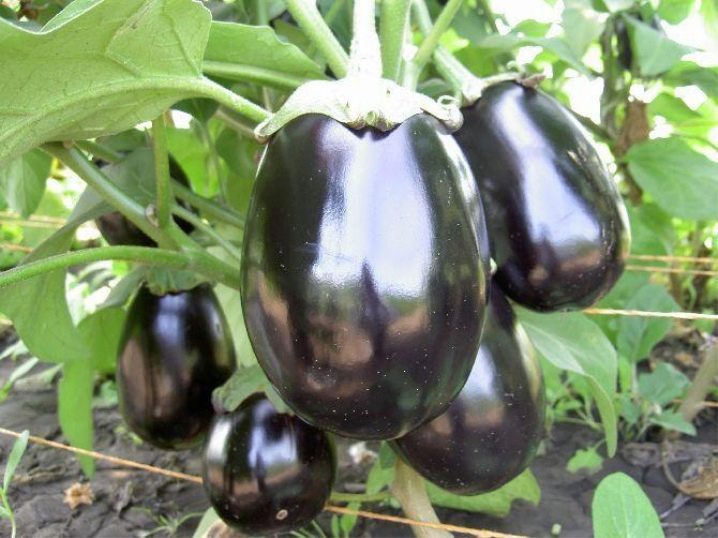
- «Black handsome man. " This hybrid was bred in Denmark. Its fruits are cylindrical in shape. The weight of each of them varies between 200-300 grams. The fruits can be stewed, fried or used for preservation.
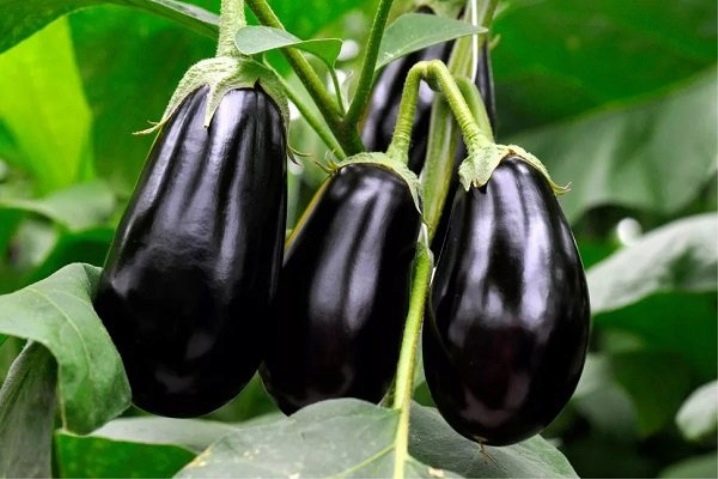
- Black Beauty. This is an early ripe fruitful variety.Its fruits are large in size, so it is very profitable to grow them.
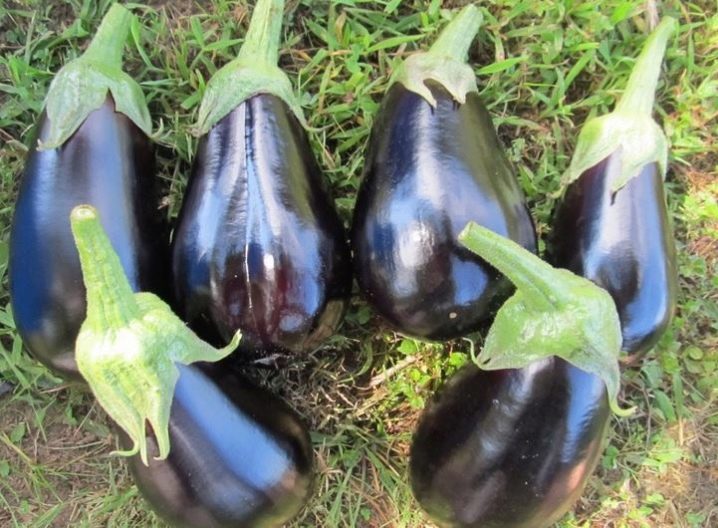
- "Nautilus". This variety is best suited for greenhouse cultivation. Its fruits are average. The color of the eggplant is dark purple, and the shape is saber-shaped.
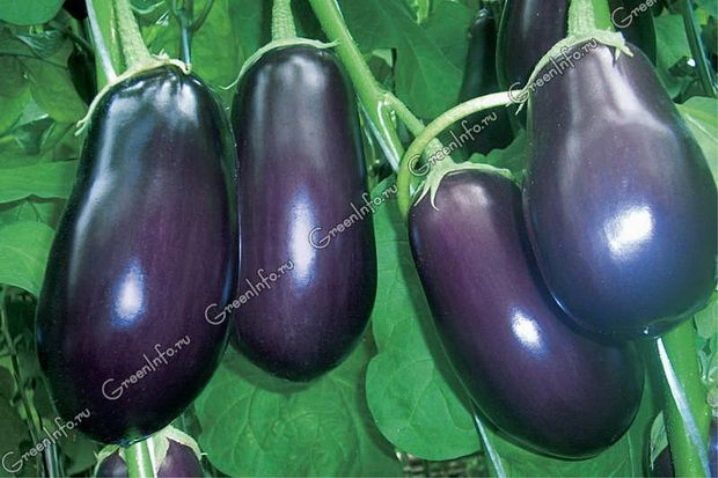
All of these types of eggplant are easy to find on the market.
Landing
Eggplant is one of the most heat-loving members of the nightshade family. Therefore, most gardeners prefer to grow "blue" seedlings.
For planting seedlings, you must choose individual containers. The fact is that the culture reacts very badly to transplantation. If the root is damaged in the process, the plants slow down in development. As a rule, seeds are sown in separate cups or peat tablets.
The quality of the soil also plays an important role in planting. As a rule, containers are filled with cleaned soil mixed with sawdust. The soil must be loose.
Seeds for planting must be chosen carefully. Planting material that was planted in the second year after collection will germinate best. To activate the growth of seeds, they are placed in a container with potassium humate for 2-3 days. The grains prepared in this way are planted in a container with soil mixture. Sprinkle them on top with a thin layer of loose soil. After that, the soil is slightly moistened and covered with foil or glass.
As soon as the first green shoots appear in the containers, the shelter can be removed. Containers with green seedlings should be moved to a warm and well-lit place.
Before planting in open ground, plants must be hardened. To do this, they are taken outside for a couple of minutes every day.
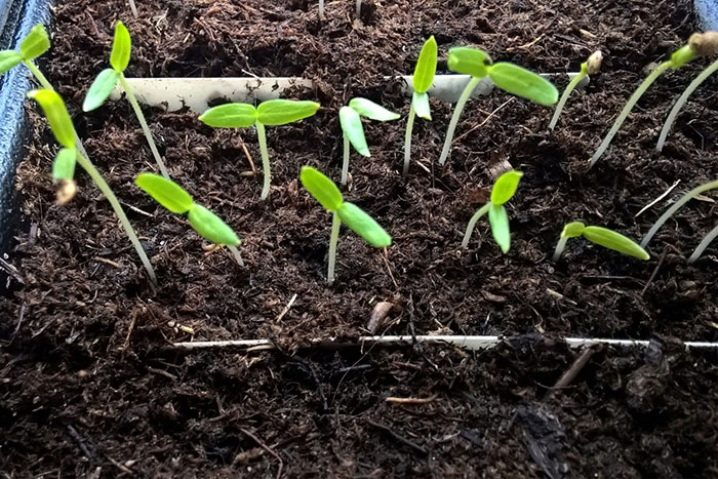
It will be possible to plant eggplants in open ground only after the soil warms up well. The planting process consists of the following steps.
-
The site must first be dug up. At this stage, high-quality fertilizers are applied to the soil. The earth must be well loosened with a rake.
-
Next, prepare the holes for planting. They should be spaced 0.5 m apart.
-
The holes should be immediately watered with warm water.
-
Transplant seedlings should be done carefully. Seedlings must be removed from the container along with an earthen clod.
-
The plants are covered with loose soil from above.
If done correctly, eggplants will grow quickly.
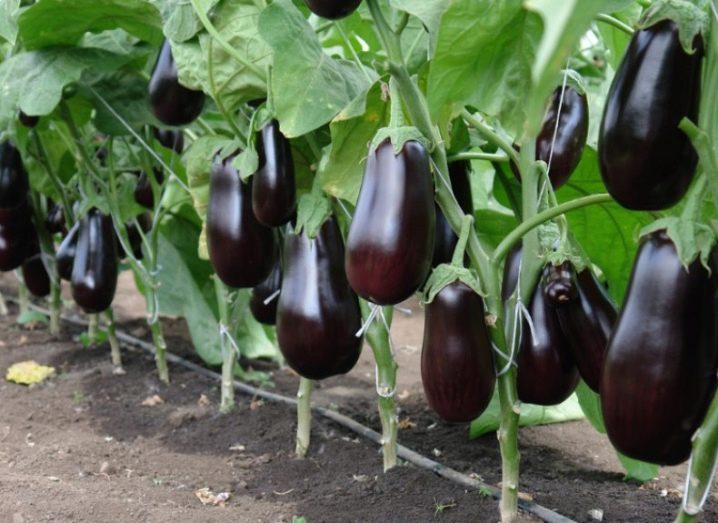
Care
Like all other plants, "blue" ones need proper care.
Watering
Culture needs in regular watering. The yield of plants and the taste of fruits depend on this. It is recommended to use warm, settled water for watering plants. It must be poured at the root. It is better to water eggplants in the evening.
It is recommended to mulch the bushes growing on the site. In this case, the soil will always remain evenly moistened. In addition, the gardener does not have to spend time loosening the beds and fighting weeds.
Eggplant can be mulched with dry straw, foliage, and sawdust.
The mulch layer should be fairly thick. It needs to be updated from time to time.
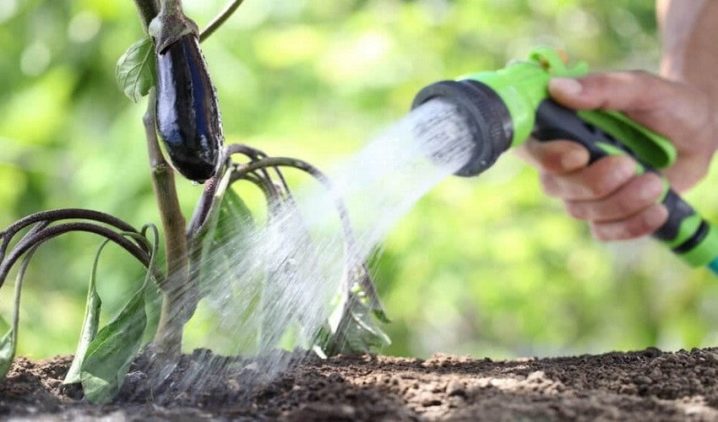
Top dressing
For normal development, plants also need high-quality fertilizing. For the first time, the bushes are fertilized 13-20 days after planting in open ground. At this stage, gardeners use fertilizers with a high nitrogen content. Chicken infusion or herbal tea is suitable for feeding eggplants.
In the future, the plants are fed with foods containing potassium and phosphorus... Most often, the usual fertilizer is used as a fertilizer. wood ash. It can be used both dry and in the form of infusions. Ashes are introduced into the soil 1-2 times a month.

Garter
Both greenhouse plants and eggplant growing in the open field need a garter. They are usually tied to wooden pegs, which are buried in the soil before planting the plants. Otherwise, the gardener can accidentally damage the weak roots of young plants.
You need to tie up eggplants immediately after they start growing.
It is best to fix them in several places.Excess lateral processes must be removed. Only the strongest shoots should be left.

Diseases and pests
Eggplants are often attacked by pests. Usually they are attacked by the following insects.
-
Colorado beetle. These pests attack most members of the nightshade family. They very quickly destroy both greens and ripe fruits. Therefore, you need to start fighting them without delay. As a rule, commercial insecticides are used to combat Colorado beetles. Insects adapt very quickly to them. Therefore, the drugs must be changed regularly.
-
Medvedka... These pests gnaw the stems of the eggplant. Because of this, the bushes become weak. It is also recommended to use chemical agents to combat the bear. But if there are still very few pests on the site, a small amount of soap solution must be poured into the moves made by them.
-
Whitefly... Small sucking pests most often affect young seedlings. They suck the juices out of the seedlings. This leads to rapid drying of the eggplant. You need to fight whitefly with insecticides. Plants will have to be processed several times. This is the only way to achieve complete destruction of pests.
-
Aphid... Despite their small size, aphids pose a great danger to eggplants. Like the whitefly, it sucks juices from young plants. Because of this, they wither and become less productive. To combat aphids, a solution prepared on the basis of marigolds, onions or potato tops is usually used.
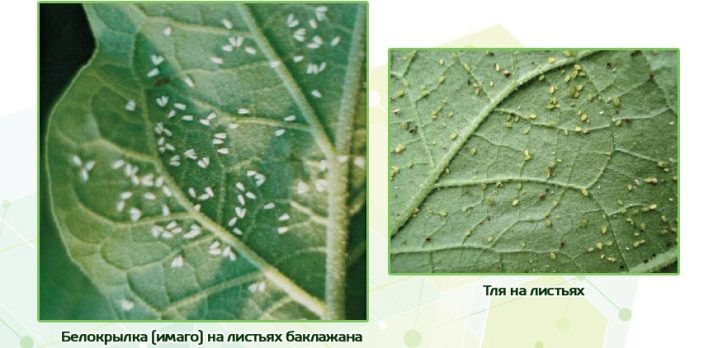
Common diseases are also dangerous for eggplants.
-
Necrosis... This is one of the most dangerous viral diseases. Diseased plants begin to turn yellow and soon die. Noticing the affected bushes on your site, they must be removed from the garden and destroyed. The soil in the garden should be treated with any fungicide.
-
Late blight... This disease also often affects young seedlings. Most often, late blight affects plants in a greenhouse. This is due to high humidity and sudden changes in temperature. It is impossible to save plants affected by this disease. Therefore, it is important to ventilate the room regularly.
-
Leaf mosaic... The foliage of diseased plants quickly becomes covered with light-colored spots. At the same time, the fruits harden and lose their palatability. To save the plants, they must be treated with Bordeaux mixture.
-
Gray rot... This fungal disease affects the foliage, fruits and shoots of plants. Dark spots appear on them, which grow over time, and then merge together. At this time, the fruits and foliage are already covered with a solid gray bloom.
To combat this disease, you can use regular garlic infusion. Of the proven chemicals, Horus has proven itself well.
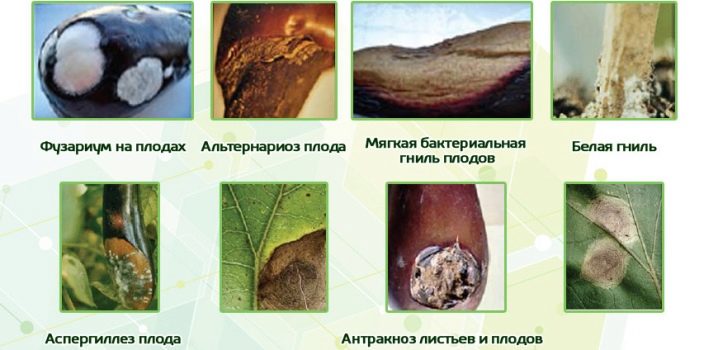
In general, if you take proper care of eggplants, it will take a minimum of time to fight diseases and pests.
Interesting Facts
There are many interesting facts associated with eggplant.
-
In the East, eggplants are called "vegetables of longevity." This is due to their medicinal composition. The fruits of these plants are especially useful for the elderly.
-
Eggplants are not only monochromatic, but also striped.
-
Flowers and foliage of these plants are strictly forbidden to eat. This can lead to poisoning.
-
It is not recommended to eat overripe eggplants either. They contain too much solanine.
-
The world leader in eggplant cultivation has been China for a long time.
Knowing all the necessary information about eggplants, many summer residents will be happy to grow them on their site.
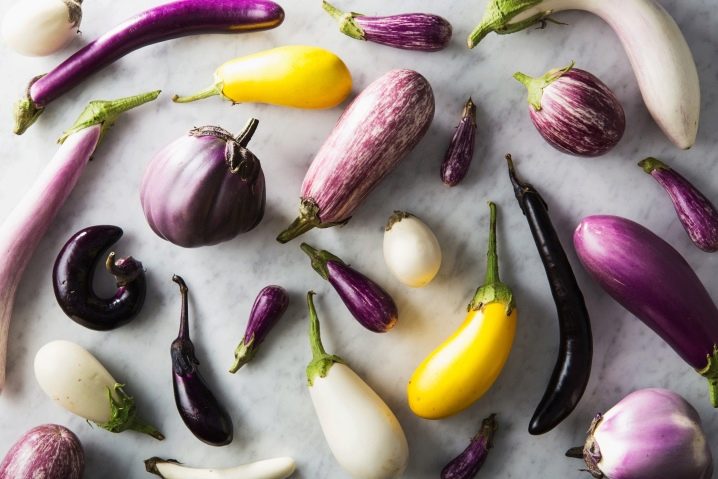













The comment was sent successfully.